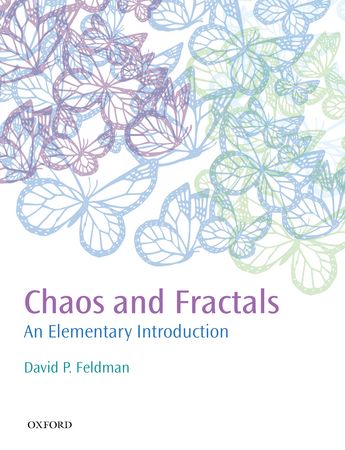
|
Chaos and Fractals: An Elementary Introduction by David
P. Feldman, Oxford University Press (2012)
448 pages, 282 problems and exercises, 333 figures
This book provides the reader with an elementary introduction to chaos
and fractals, suitable for students with a background in elementary
algebra, without assuming prior coursework in calculus or physics.
Simple iterated functions are used to introduce the key phenomena of
chaos: aperiodicity, bifurcations, and sensitive dependence on initial
conditions, also known as the butterfly effect. Fractals are
introduced as self-similar geometric objects and analyzed with the
self-similarity and box-counting dimensions. After a brief discussion
of power laws, subsequent chapters explore Julia sets and the
Mandelbrot set. The last part of the book examines cellular automata,
chaotic differential equations, and strange attractors.
The book is richly illustrated and includes over 250 end-of-chapter exercises. A flexible format and a clear and succinct writing style make it a good choice for introductory courses in chaos and fractals.
“Chaos and fractals are two intertwined concepts that have revolutionized many areas of science and renewed popular interest in mathematics over the past few decades. Feldman's book is a rich resource for anyone who wants a deeper understanding of these subjects without the need for advanced mathematics.” —Julien Clinton Sprott, University of Wisconsin-Madison
“David P. Feldman provides a delightful and thoughtful introduction to chaos and fractals requiring only a good background in algebra. The formal treatment of nonlinear dynamics, chaotic behavior, Lyapunov exponents, and fractal dimensions is leavened with creative analogies and many helpful and visually attractive figures and diagrams. Even more mathematically sophisticated readers will find this book a good starting point in exploring the complex and beguiling realms of chaos and fractals.” —Robert C. Hilborn, Associate Executive Officer, American Association of Physics Teachers

